Supermicro X12SDV-10C-SPT4F Block Diagram and Topology
For the Supermicro X12SDV-10C-SPT4F platform, there is a common block diagram for this higher-core count 10 core units as well as the 4 and 8 core variants (4C/8C.)
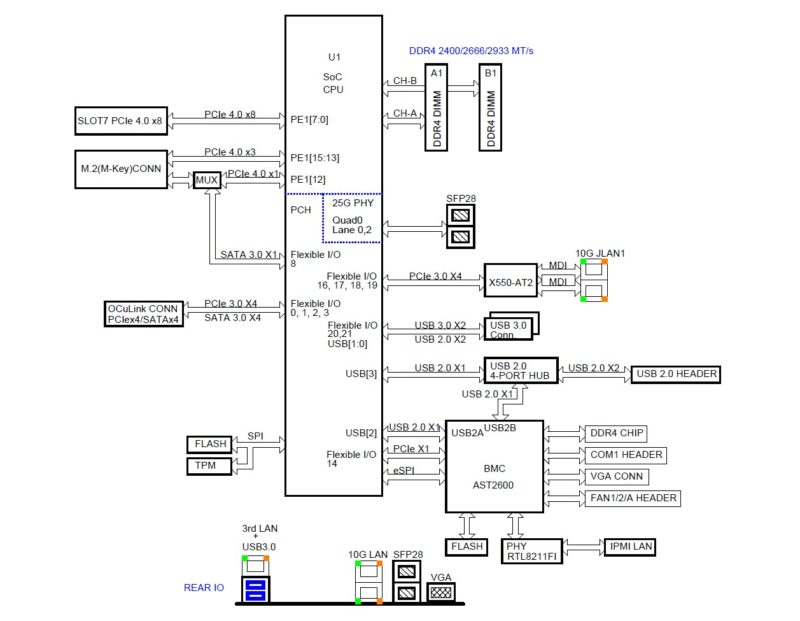
For our system, here is how the unit is configured:
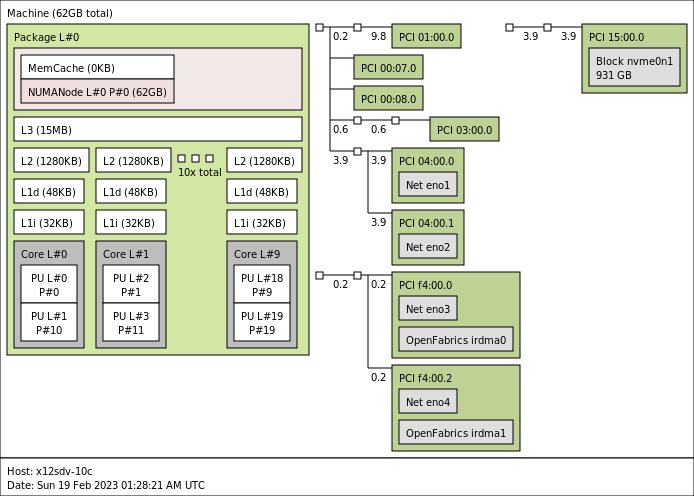
As you can see, everything is on the same NUMA node making this a very simple platform. The two 25GbE ports are showing as the Ethernet and OpenFabrics RDMA devices.
Next, let us dig into the Intel 25GbE networking since many have not seen that yet.
Intel E823-L Networking
One of the most exciting features of the new Xeon D platforms is onboard networking. Intel has moved the IP behind this networking solution from its 700 series of Ethernet controllers to the 800 series. As such, we now get SFP28 25GbE onboard this Supermicro X12SDV platform, where we may have only gotten SFP+ 10GbE previously.
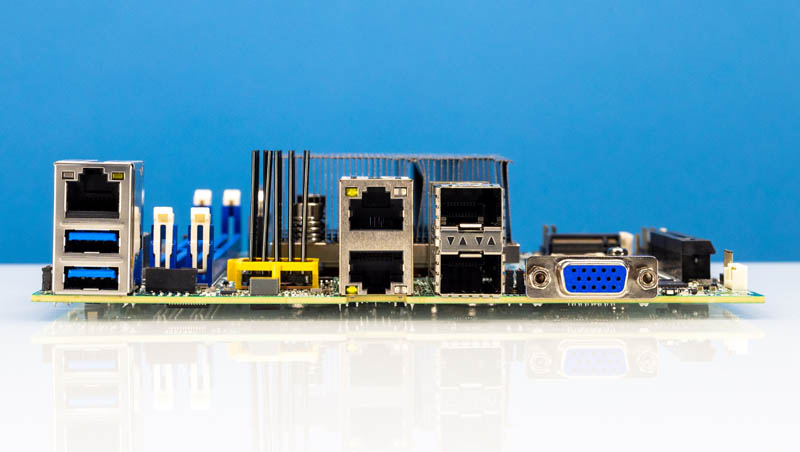
Since many have not seen this NIC, here are all of the NICs in lshw. We can see the two X550T 10Gbase-T NICs alone with the two Intel E823-L for SFP NICs.
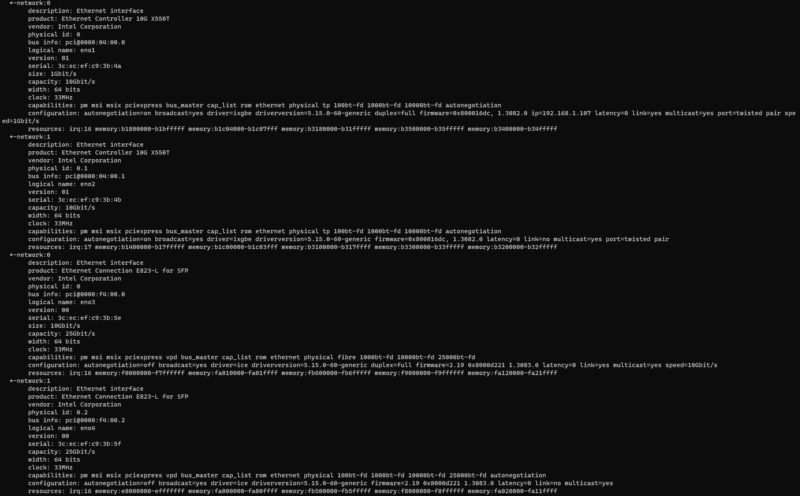
Here is the lspci -vvv output that many of our readers ask for.
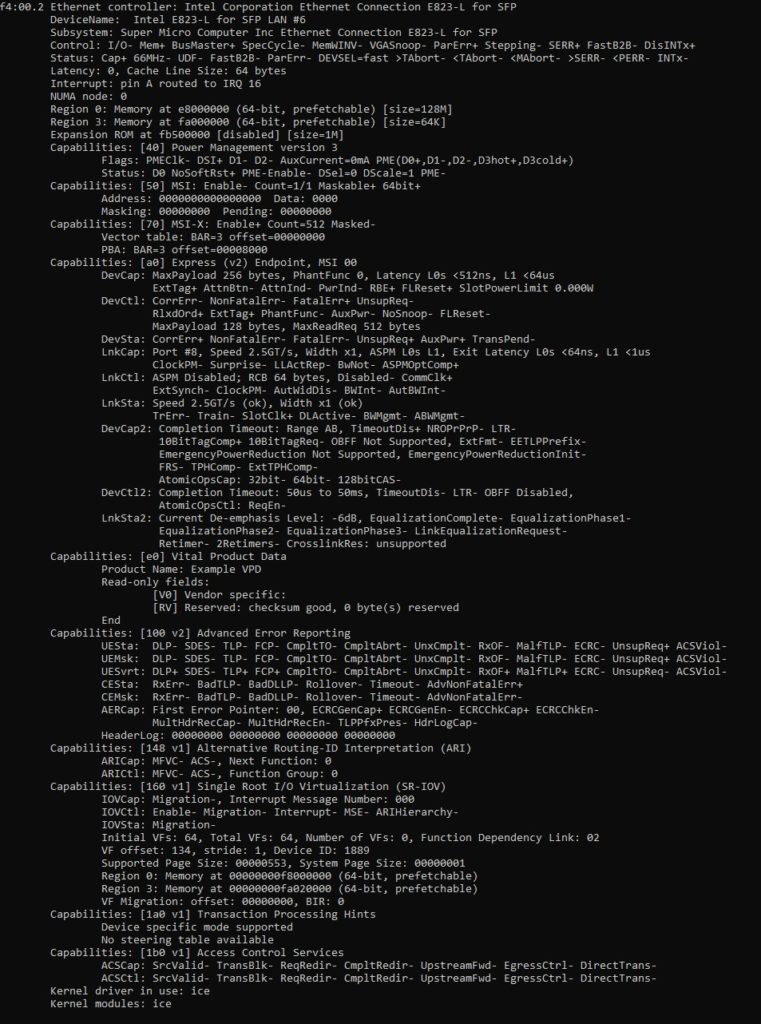
Since this is an Intel E800-based NIC, it uses the newer Intel “ice” driver in Linux. The Intel E800 series has been out for some time, but older OSes may not have this built-in. Support is generally pretty good at this point.
Final Words
If one were to simply look at the 10 core spec, and even at the motherboard itself, there might be an urge to think, “not much has changed.” In reality, it is quite the opposite. The new Intel Xeon D-1749T is significantly faster than the previous generation. On the other hand, it also uses more power. We saw higher idle in the 25-35W range depending on the configuration and top-end power consumption of well over 100W. This can still fit in a 1A 120V rack quota, but one will need to be careful about the configuration.
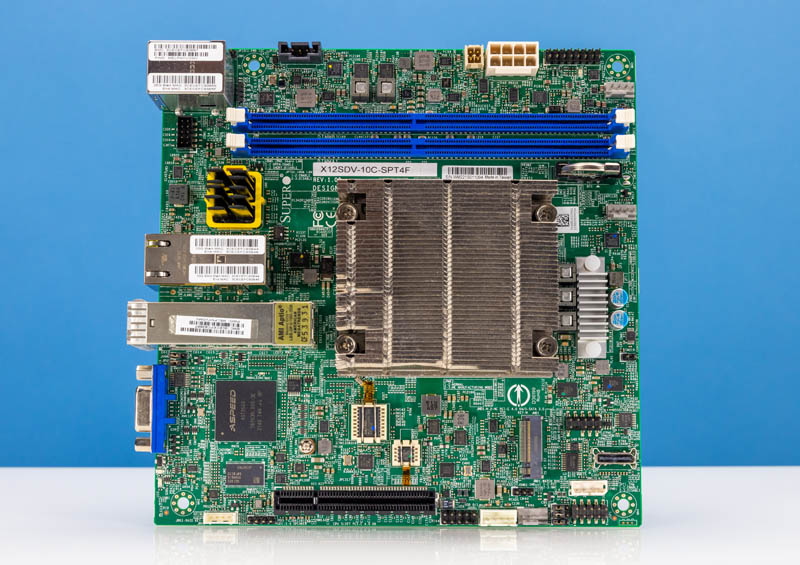
One of the challenges is that the price of these chips has also risen, a lot. The Intel Xeon D-1749NT is a $1309 list price part. For some comparison, an Intel Xeon D-1557 is $795. While we get new features and more performance, we are now firmly in the zone where many are going to look to other platforms like the Xeon E series and even the lower-end Xeon W/ Xeon SP lines if one simply wants a low-core count part.
The updated Intel Xeon D-1749NT platform is great. Having built-in 25GbE along with PCIe Gen4 is really nice. On this platform, it also feels more modern. We do not have 1GbE data ports since the RJ45 ports are 10Gbase-T. We also do not have things like 7-pin SATA ports. this platform feels more modern, especially with built-in 25GbE.

We recently looked at two low-cost, low-power, and low port count 25GbE/ 100GbE edge switches, so we are seeing 25GbE dramatically drop in price. See our MikroTik CRS504-4XQ-IN and MikroTik CRS518-16XS-2XQ-RM reviews. Those are really interesting 25GbE edge switches available now, that we can see being paired with these. 25GbE and SFP28 are taking over from SFP+, so it is great to see Supermicro here.
Overall, the Supermicro X12SDV-10C-SPT4F is very quick and still fits into a mITX chassis making it deployable in many different scenarios.




Excellent review, Thank you for posting it.
you mention in the article that the 1749NT does not feature Intel’s QAT but on its ark page it is listed as present. is this a mistake on Intel’s part ?
“Supermicro is using a two-channel and two DIMM per channel (1DPC) layout here”
I think y’all meant to say “Supermicro is using a two-channel and one DIMM per channel (1DPC) layout here”
Can’t wait to pickup one of these boards. Amazing review. Thank you .
I would really like to know if that X550-AT2 can run NBASE-T under PfSense.
You should provide geekbench single core and multicore scores so these type processors can be more easily compared to consumer processors. Plenty of your audience makes tough decisions between used enterprise and consumer grade for various parts of their home labs.
I’m curious if there’s any kind of aftermarket heatsink for these? I’d like to use one in an overkill tabletop NAS build and am concerned about proper airflow. They’re really the only mITX that ticks all my boxes – OOB IPMI on-board, 10+GB NICs on-board (SFP* cages a plus), high RAM capacity.
I don’t know of an aftermarket heat sink solution for these, but the mounts appear to be on ~80mm and ~50mm centers. Noctua (e.g.) uses an 80mm 2-point mount, so it might be possible to adapt one to this, but it’d be super tight with the Ice Lake-D’s narrow keep-out area. A down-firing model (with the heat pipes coming out one side only) might fit, and might block slots. VLP DIMMs might also help. I can see why they didn’t use an LGA 115x/1200/1700 -style keep-out and mount (size), but it sure would have been convenient.
Why would pfSense have trouble with the x550?
Isnt this mitx 17xx and the big brother a little bigger matx The one on 27xx series? That is The case IF I look at supermicro site (in my case i only have place for mitx )silverstone 380 i think
Man, what happened to the CPU heatsink? The fins in the middle inside are all crunched up.
Any guesses if TrueNas will pick up all the networking?